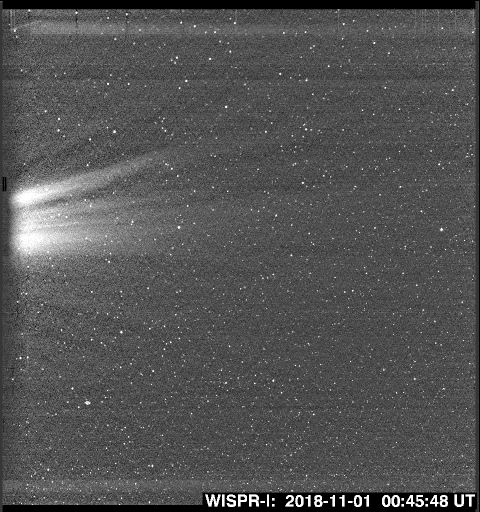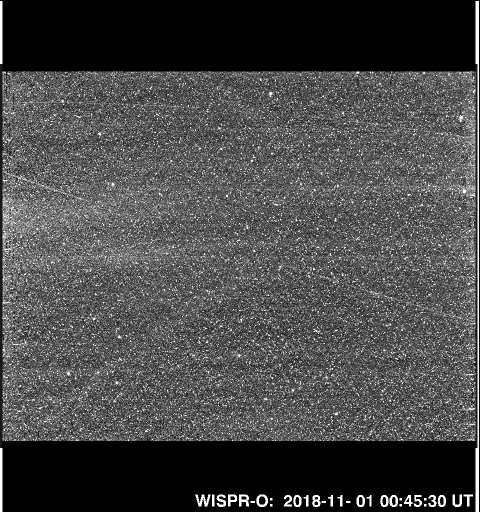





Disclaimer: This is a joke. Obviously. You can’t actually buy the Parker Solar Probe. And before you get any smart ideas, you’re also a tad late if you were hoping to stowaway in that cozy little cubby behind the heat shield. The Parker Solar Probe has been in space ever since its launch way back in August 2018.



The corona stretches up to about 13 million km (18.8 solar radii) above the sun's surface. That means you could fit another 18 suns across just the diameter of the corona! The edge of the corona is called the Alfvén surface, represented here by a jolly little elf van zipping around the sun. At the Alfvén surface, the sun's gravitational and magnetic fields become too weak to hold in plasma particles, so they fly out into space as the solar wind. That's the same solar wind that produces stunning here on Earth!
But it's also the same solar wind that, if strong enough, can damage not only satellites and astronauts in space, but also electrical grids and telecommunications networks on Earth. Yet even solar wind pales in comparison with solar storms, where massive amounts of plasma are ejected at once from the corona - fittingly, called coronal mass ejections (CMEs).
Typically, these CMEs happen anywhere from once every 5 days to once every 8 hours, and if one of them happens to hit Earth, they can have the similar effects as solar wind, but way worse. The largest solar storm ever recorded, called the Carrington Event, was back in 1859, when the only electrical systems were telegrams. But if it happened today, it would likely wipe out our power grid for months or even years on end!
By getting up close and personal with the source of these solar phenomena in the corona, the Parker Solar Probe can use its instruments to better understand the Sun's mysteries - like why is the corona so hot? And what causes the fast solar wind? In doing so, we gain a better picture of this solar weather, allowing us to prepare for its more severe effects.

images lagging?

What the WISPR (Wide-field Imager for Solar PRobe) essentially does is it uses its 2 telescope cameras to take never-before-seen images of the corona and solar wind that other instruments will measure directly.
Now, if you've ever pointed a camera at the sun, you'll know that it blows out essentially everything else because it's so absurdly bright. This is why the WISPR points at an angle away from the sun (click triangle icon above to see field of view), just barely catching the corona on the left edge of the inner camera. The heat shield also comes in handy as a way to block most of the sun's light, allowing the WISPR to effectively capture the much fainter corona.
If you want to see some action, check out the WISPR footage from 9/5/2022 (during orbit 13), when an enormous coronal mass ejection (CME) erupts from the Sun, hurling billions of tons of high-speed plasma out into the solar system. If it had hit Earth, it could've caused continent-wide blackouts and disabled communications systems. But thankfully, it didn't - and actually, turned out to be an opportune moment for the PSP - which flew straight through it, dutifully taking observations & measurements that will allow us to better understand & predict these mammoth storms going forward (read more here).
The Solar Probe Cup (SPC) courageously stares straight into the sun, enduring temperatures that could melt away even steel and iron (over 3000°F / 1650°C) - all in order to measure the temperature, density, and velocity of protons and alpha particles in the solar wind (only data for protons is shown here).
WHAT IS ENERGY FLUX?!
TLDR: It's just a value proportional to the number of electrons hitting the sensor per second (read more here)
What the SWEAP (Solar Wind Electrons Alphas and Protons investigation) essentially does is it counts the 3 most common plasma particles in the solar wind (electrons, protons, and alpha particles) and measures their temperature, density, and velocity (and more!). This data allows us to understand how the solar wind behaves as it accelerates in the corona of the sun, which will then allow us to better be able to predict what the solar wind will be like when it hits Earth (like a weather forecast, but for solar weather).
And the results have already started to show. Scientists at the Johns Hopkins Applied Physics Laboratory (APL) used Parker Solar Probe's data to discern evidence that "small-scale jetting in the Sun's corona, driven by a process called magnetic reconnection, is responsible for the heating and acceleration of the solar wind." Read more about this intriguing discovery here.
What the ISOIS (Integrated Science Investigation of the Sun) essentially does is it measures the composition of energetic particles in the solar wind, from hydrogen all the way up to iron, across a broad range of energies. It is comprised of 2 different instruments: the EPI-Lo, which uses 80 tiny apertures to measure lower energy particles, and the EPI-Hi, which combines 3 telescopes (LET1, LET2, and HET) to measure higher energy particles.
To help visualize a 3D vector on your 2D screen, the magnetic field data displayed here is split into 3 vector components: R, T, and N. R is the radius, pointing from the Sun outwards to the PSP. T is tangent to the PSP's orbit, pointing in its direction of travel. N is normal (perpendicular) to both R and T, pointing "up" to form a 3rd axis. Ingeniously, this coordinate system is called the RTN coordinate system (yes, it blew my mind too). The units of magnetic field here are nanoteslas (nT), or one-billionth of a Tesla. For reference, a fridge magnet is about 1 million nT.
What the FIELDS (Electromagnetic Fields Investigation) essentially does is make the first direct measurements of magnetic & electric fields inside the corona. But that is not all. It also measures properties of the plasma (such as electron density & temperature), interplanetary radio emissions, and more! This data, when combined with that of the other instruments, is giving us crucial insights into the physics of coronal heating and solar wind acceleration - bringing us one step closer to understanding the mysterious yet majestic inferno that is our Sun.
1 Courtesy of NASA/SDO and the AIA, EVE, and HMI science teams.
2 Parker Solar Probe was designed, built, and is now operated by the Johns Hopkins Applied Physics Laboratory as part of NASA’s Living with a Star (LWS) program (contract NNN06AA01C). Support from the LWS management and technical team has played a critical role in the success of the Parker Solar Probe mission.
3 The Wide-Field Imager for Parker Solar Probe (WISPR) instrument was designed, built, and is now operated by the US Naval Research Laboratory in collaboration with Johns Hopkins University/Applied Physics Laboratory, California Institute of Technology/Jet Propulsion Laboratory, University of Gottingen, Germany, Centre Spatiale de Liege, Belgium and University of Toulouse/Research Institute in Astrophysics and Planetology. Vourlidas, A. et al. (2016), The Wide-Field Imager for Solar Probe Plus (WISPR), Space Science Reviews, 204, 88–130, 10.1007/s11214-014-0114-y
4 We acknowledge the NASA Parker Solar Probe Mission and the SWEAP team led by J. Kasper for use of data.
5 The FIELDS experiment on the Parker Solar Probe spacecraft was designed and developed under NASA contract NNN06AA01C.